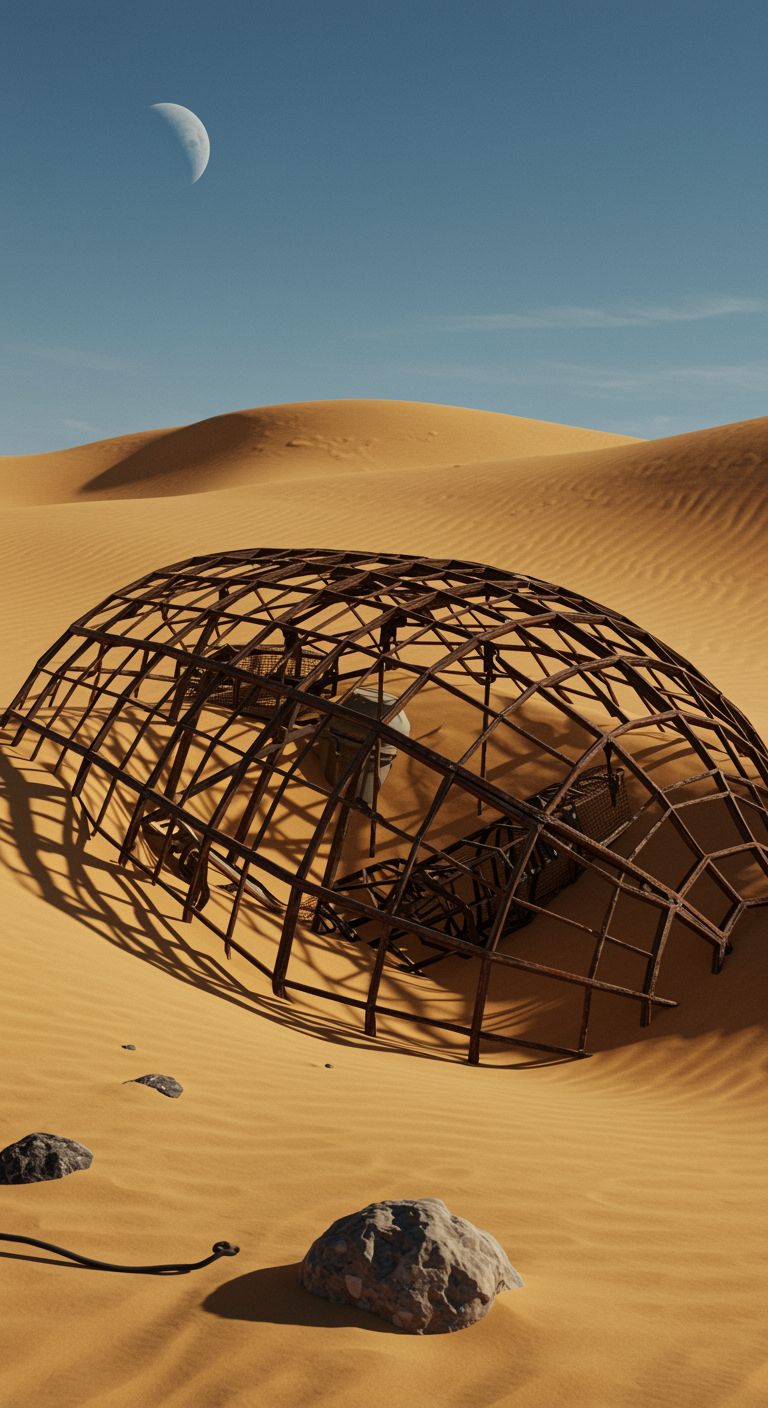Hidden Jewel

Day 1: Landing on Pace
Today, we touched down on Pace, the hidden jewel of the Gliese 144 system. The landscape stretched across a vast plain of sand, broken by rocky ridges and distant mountains that shimmered beneath a pale sky. The air was thin but breathable, with a metallic taste that lingered in the throat. The silence here felt immense, as if the entire planet were holding its breath.
Our team, a group of geologists and environmental scientists, established our first base near a natural rock formation we named The Gateway. It rises above the desert like a monument, its surface shaped by countless centuries of wind and dust. As I stepped onto the ground, the dust swirling around my boots, I thought of Earth and how far we had come. Tonight we rest. Tomorrow we begin the work that will define this mission.
Day 2: First Survey of the Eastern Flats
The morning began with equipment checks and calibration. By midday, we set out in small groups to begin our first survey. My team traveled east across the open flats, scanning the surface for mineral content. The sand here is unlike anything from Earth, soft and almost powdery, clinging to every surface. Our footprints disappeared almost instantly under the steady sweep of the wind.
By afternoon, we uncovered a dark mineral embedded in the rocks. Yves believes it may possess unusual magnetic properties. Collecting the samples was difficult because the wind carried fine grains that struck at our suits and equipment like needles. Even through gloves, the dust bit at our skin. Back at base, exhaustion gave way to excitement. We were the first people to touch these stones and breathe this air. It is a feeling beyond description.
Day 3: Discovering the Fumarole Fields
We followed faint thermal readings from orbit and traveled west across broken terrain. After several hours, we reached a field of fumaroles that vented thin clouds of gas. The ground beneath our boots was cracked and uneven. A sharp odor of sulfur hung in the air, even through the filters. At regular intervals, a column of steam erupted and faded into the wind.
Our sensors recorded traces of xenon and an uncommon form of helium rising from the vents. Martin, our lead chemist, was overwhelmed by the readings. He believes we are standing on an undiscovered reserve of rare elements. As night settled, the gases glowed faintly, painting the entire field in soft blue and amber light. None of us spoke for a long time. It felt as though we had stepped into something ancient and sacred.
Day 4: The Sandstorm
At dawn, we saw it approaching from the horizon, a wall of dust and light stretching across the plain. By midday, the storm reached us with a violence we were not prepared for. The wind screamed across the desert, hurling sand that struck the walls of the habitat like a barrage of metal shards. Inside, the air hummed with vibration and static.
Through the reinforced viewport, we could see nothing but a swirling red haze. The sound was a constant roar that made conversation impossible. We waited in silence for hours until the wind finally began to fade. When we stepped outside the world had changed. Old landmarks were buried, new shapes carved from the sand. It was as if the planet had rearranged itself while we waited in the dark.
Day 5: The Ridge Walk
We climbed toward a northern ridge we had mapped earlier from orbit. The ascent was slow and heavy, every step sinking deep into loose sand. When we reached the top the sight took our breath away. The plains of Euclides stretched to the horizon, dotted with scattered rock spires that shimmered in the heat.
The day was spent surveying and collecting samples. The exposed rock revealed layers of sediment that told a story of oceans and rivers long vanished. Yves found a fossil embedded in a stone face, a pattern of spirals and ridges that hinted at ancient life. The realization that Pace once carried living forms struck us all. This is not an empty world. It has a history written in its own dust.
Day 6: The Abandoned Outpost
Our final day brought an unexpected discovery. West of our base, we found the remains of an old human structure buried beneath the dunes. The metal frame was corroded and covered in sand, but its design was unmistakably human. Someone had been here before us. No records mention such a mission.
Inside, we found fragments of equipment, shattered screens, and a few personal logs too damaged to recover. There were no signs of what had happened to the crew. The silence inside that ruin was heavy and absolute. Standing there, I felt a strange connection to those who came before. They had looked upon this same horizon and wondered, just as we do now.
As night descended, the sands reflected the glow of the twin moons. Pace is not a jewel because it shines but because it endures. It is beautiful, dangerous, and filled with secrets that demand patience and respect. We have only begun to understand it, and as I record this final entry, I know this world will draw others back long after we are gone.
Journal of Dr. Lucia Moretti, European Exploration Team on Pace
